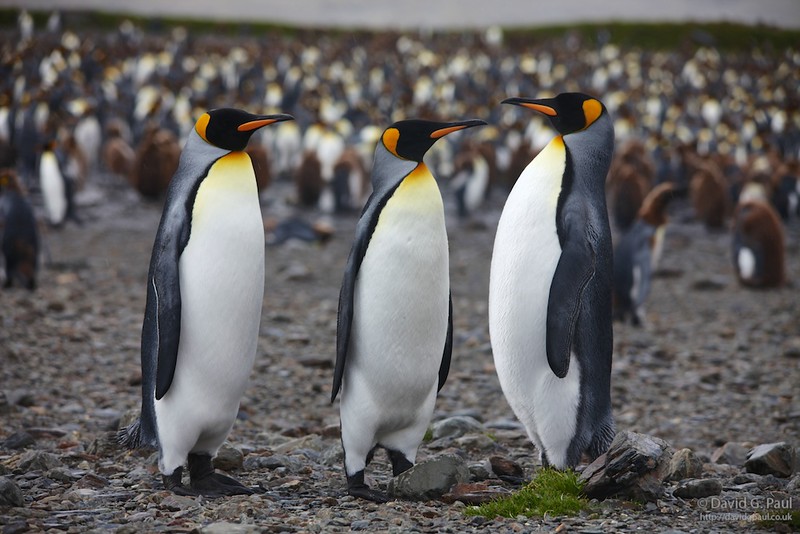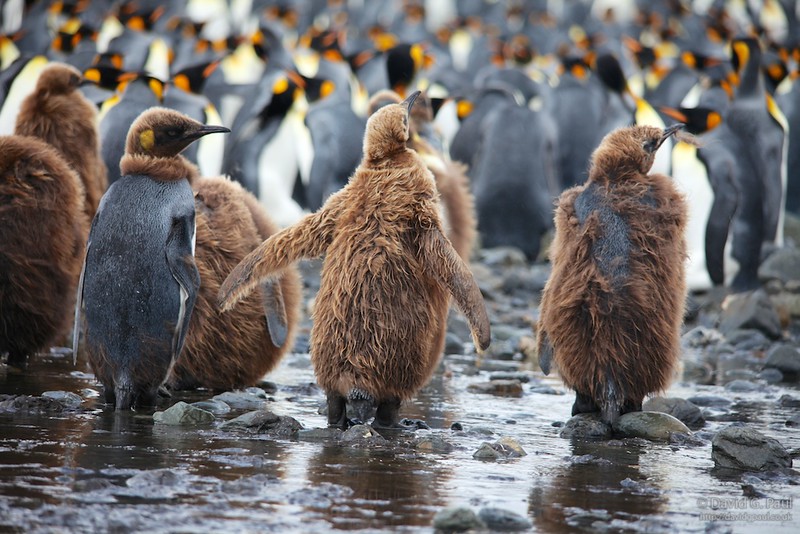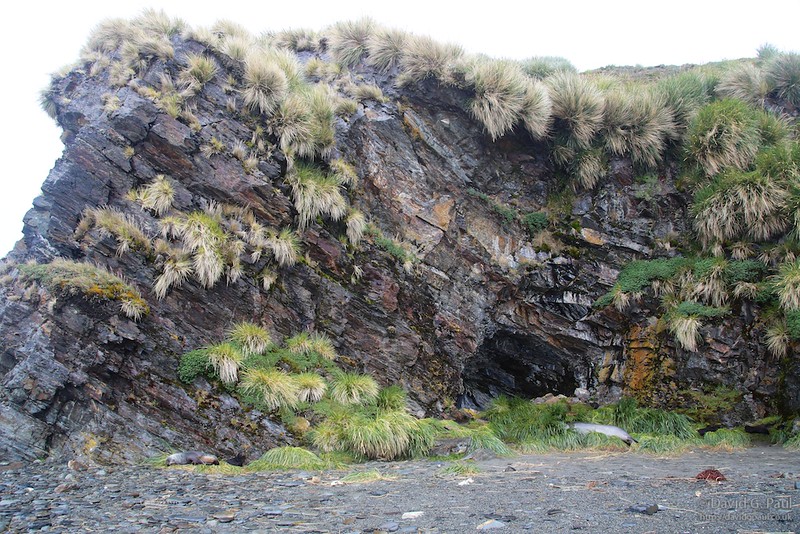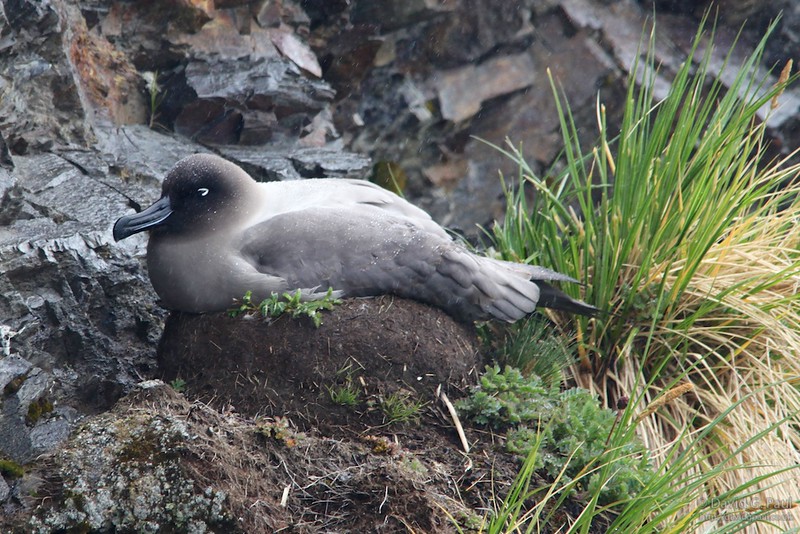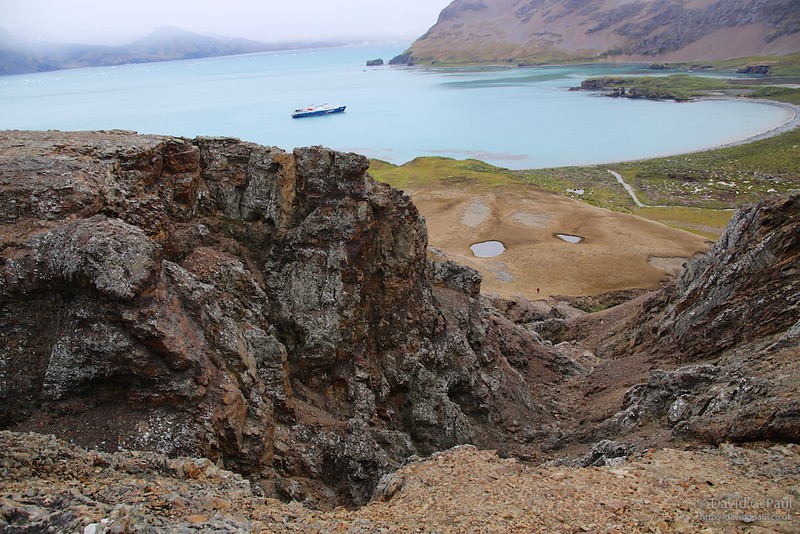Following a long and tiring day it was good to get a 07:45 wake-up call for a change; although I’d been awake for some time due to us having entered open seas earlier in the morning and a storm creating strong waves. We dropped the anchor in Fortuna Bay during breakfast and this was followed by the staff making a reconnaissance trip to the shore to check conditions.
On their return they confirmed we could go ahead with the landing though they had to adjust the procedures slightly. Due to the high waves we had to be pulled in backwards when the zodiacs reached the shore, and then disembarked as quickly as possible. We were then led single file through the masses of Antarctic Fur Seals and King Penguins, across streams and some boggy areas until we reached a colony of King Penguins.
Here amongst the colony we saw younger individuals that still had a large amount, or in some cases all, of their brown fur remaining. These juveniles would not be able to fish for themselves due to this fur and would be a few weeks until they would be able to feed again. This meant we had to stay further away than normal to avoid agitating them as without food they needed to conserve their energy. Some of these juveniles stood around in fresh water as they were not yet able to desalinate sea water.
After quite some time in the rain we took an optional route with one of the guides to go looking for light-mantled albatrosses. This route led us past an old cave that used to be used by sealers and had been partially blocked with a man-made wall to offer them some protection from the wind. We couldn’t go in though as there was a Southern Elephant Seal blocking the path.
The place where they expected to find albatrosses was only filled with seals, no birds in sight. However, after a few minutes our guide spotted an albatross nest with an adult sitting on it. This nest was on the side of a cliff so we couldn’t all go up en-masse. At this point he explained it wasn’t worth going up if you didn’t have a zoom lens as we wouldn’t be able to get close enough.
He decided we’d only be able to work our way up in groups of four, but as it turned out there were only four of us wanting to go up anyway. The guide led four of us up a different part of the cliff side so we could look down on it from a safe distance. The climb was a little treacherous in places due to the persistent rainfall which meant clinging on to tussock grass at times, but it was worth the effort even if the ground did move beneath our feet.
We were then amongst the last to return to the boat, and was back just in time for lunch. Once everyone had finished eating we set off out of the relative calm of the bay and into the more turbulent waters of the open sea.
On the way into Jason Harbour we passed the HMS Protector (A146), an icebreaker patrol ship in the Royal Navy. This ship was previously named the m/v Polarbjørn (Norwegian for Polar Bear) and fitted as a research vessel until she was bought by the British Ministry Of Defence. It gave way to let us past the icebergs and into the bay so we could make landfall again.
When we got there a number of us headed inland to higher ground. It took some time to reach the summit due to loose ground but the top had a good view of the area. The way back had two choices – a short route, and a long route. We did of course take the longer route back so we could see more of the location.
This longer route led to a large crevice which we couldn’t descend down; instead we had to go around. From that high point we tried to identify one of the passengers that had wandered off in their own but they were too far away.
The path down eventually got us to a stream we had to walk down, but at the bottom it was enclosed from all sides by seals. As the rest of the group was already descending the guide called for a zodiac to come and pick us up. The evening meal was MSC certified Toothfish fillet that had been provided from the Falklands, followed by Apple strudel.
It was an early finish this evening due to the knowledge that the next day would be an early start.
